Cu Chi Wildlife Rescue Station, located in An Nhon Tay Commune, Cu Chi District of southern Ho Chi Minh City,
was established in September 2006. Photo: Nguyen Luan
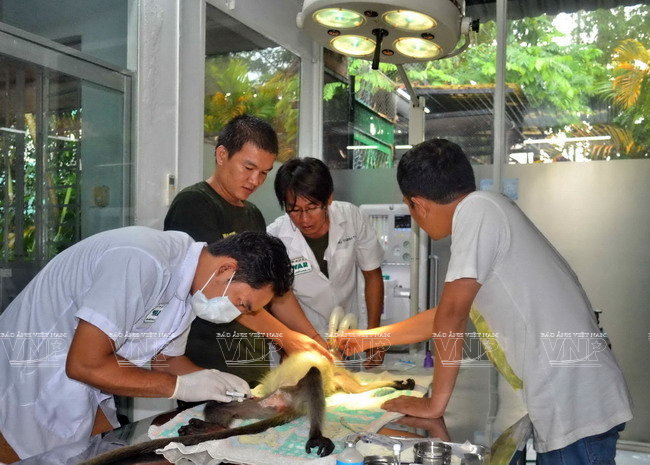
Vets at Cu Chi Wildlife Rescue Station perform a surgery on a yellow-cheeked gibbon (Nomascus gabriellae).
Photo: WAR’s file.

A staff of the station feeds the animals. Photo: Nguyen Luan/VNP

A cadre of Cu Chi Wildlife Rescue Station introduces some wild animals raised at the station to visitors.
Photo: WAR’s file
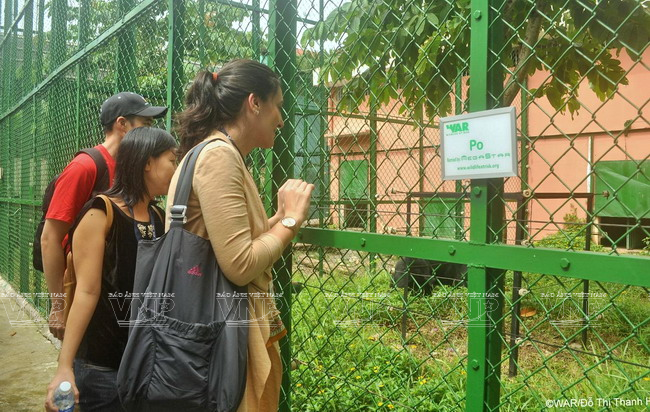
Foreign visitors tour the Cu Chi Wildlife Rescue Station. Photo: WAR’s file
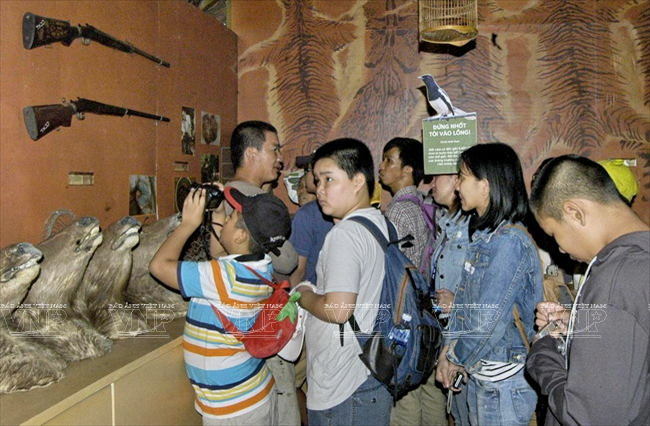
Tourists visit the station’s display hall. Photo: WAR’s file
About ten years ago, during his working trips or tourist tours to Vietnam, Dominic Scriven acknowledged the fact that the wildlife in Vietnam was facing lots of risks of extinction. Without immediate and effective measures for protecting them, many valuable species would become extinct. Together with some associates, he opened an office of WAR in HCM City and built Cu Chi Wildlife Rescue Station.
The station’s main task is to receive wildlife confiscated by the local authorities from illegal traders or breeders, treat their wounds if they have any, rehabilitate their functions and set them free in the wild when they are well.
Currently, there are around 20 staffs working at the station, who are all devoted to their jobs of taking care of the wildlife. They have been trained in veterinary skills, both in Vietnam and abroad, and are capable of rescuing and curing the wildlife.
According to Le Xuan Lam, head of the station, who has worked for the station since its establishment, the workload is truly heavy and reserved for only those devoted to the wildlife. It requires their love for the animals, and their responsibility for the job, as they have to go to the sites to rescue the animals at any time, day or night, and in any weather when needed.
Located in an area of 4,000 m2 and designed like a small park with many trees, the station has eight quarters, each with a specific function for the animals. Currently, more than 200 creatures of over 50 animal species are being bred here, including rare and valuable species in Vietnam such as the Tibetan bear, Malayan bear, black yellow-cheek gibbon, pig-tailed monkey, water rat, Java pangolin, mountain tortoise, wild cat and cobra.

An Asian black bear that lost its front leg is tended at Cu Chi Wildlife Rescue Station. Photo: Nguyen Luan

Individuals that are impossibble to fully recover will be tended at the Station for lifetime. Photo: Nguyen Luan
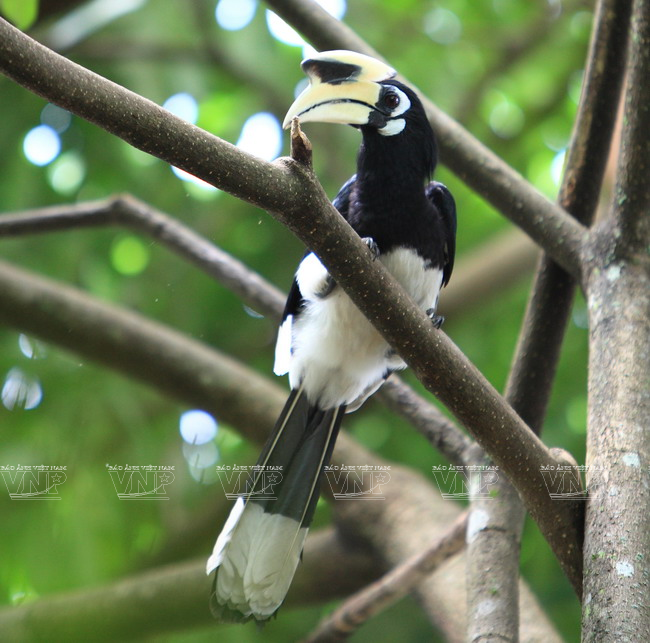
An Oriental pied hornbil that is being tended at the Station. Photo: Nguyen Luan
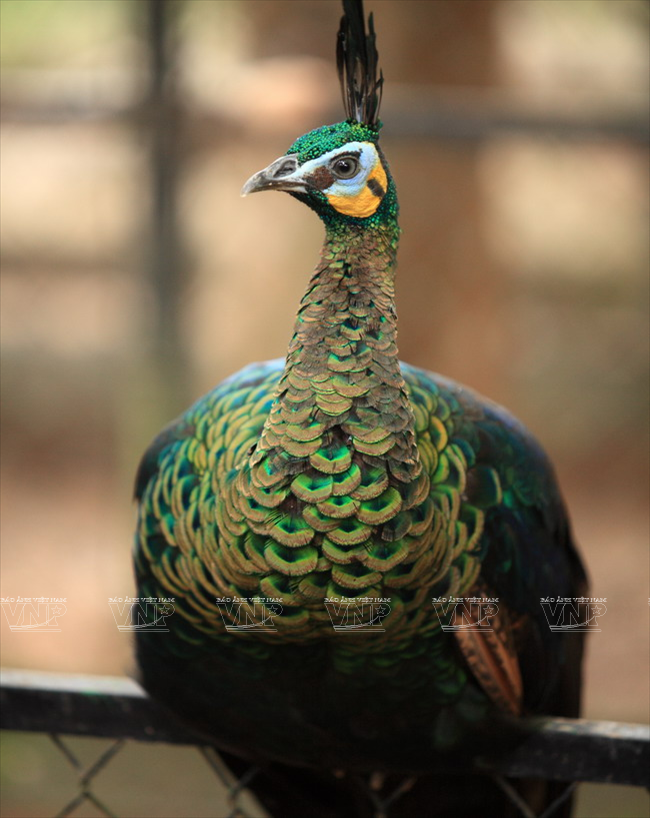
A peacock raised at the Station. Photo: Nguyen Luan
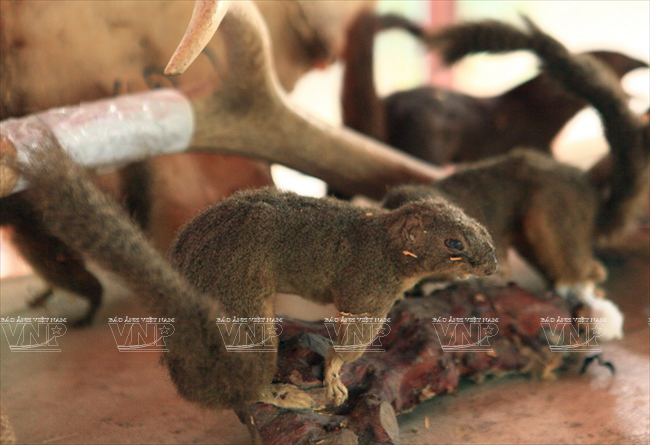
The Station’s display hall contains many valuable objects and documents. Photo: Nguyen Luan
The animals, when being brought to the station, are often physically weak, wounded or nervous due to illegal hunting or trapping. That’s why, veterinarians and rescue workers have to check their health first, then set up plans for treatment and functional rehabilitation with regular check-ups.
“We will only release strong animals to the wild, and will keep in our station forever those which cannot live by themselves, like our adopted children,” said the station head.
Learning about the good operations at Cu Chi Wildlife Rescue Station, in recent years many people have come and handed over the valuable animals that they were breeding at home to the station. For example, Ms. Vinh in Tan Binh district, HCM City, raised a “family” of water rats. Due to her lack of breeding skills, the animals got mal-nutrition, so she brought them to the station and let them live there. After a period of careful treatment, the water rats became strong and were set free in the wild witnessed by Ms. Vinh and the station’s members.
In 2014 alone, about 1,000 individuals were released from the station back to the national parks or conservation centres. This is really a great effort that the station’s members are very proud of, and that encourages them to continue doing their current job, which is quiet, yet so meaningful to society./.